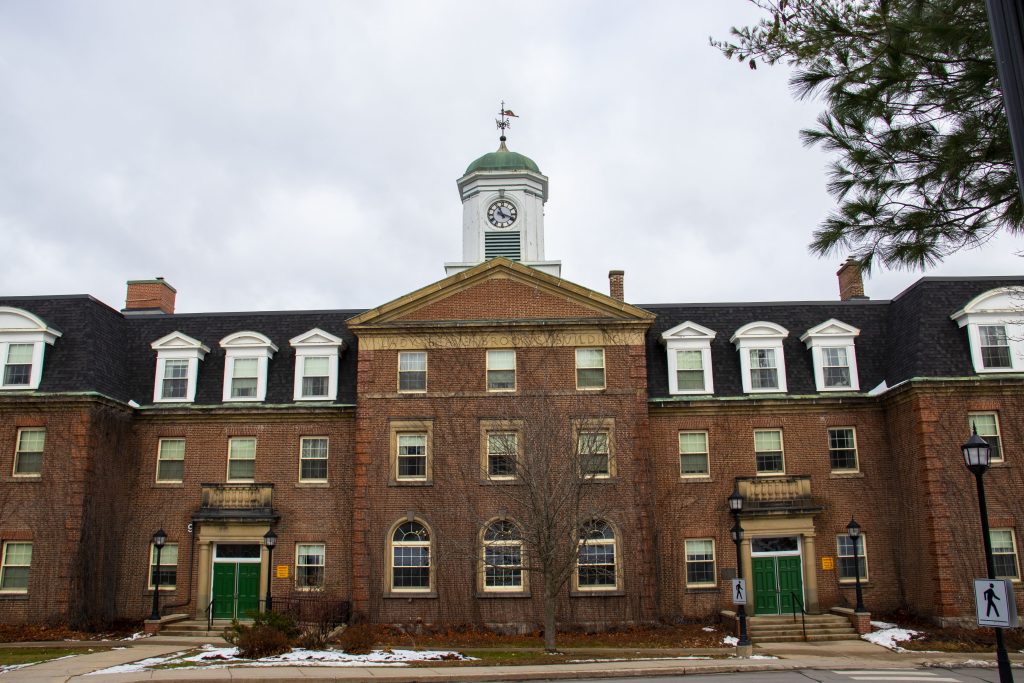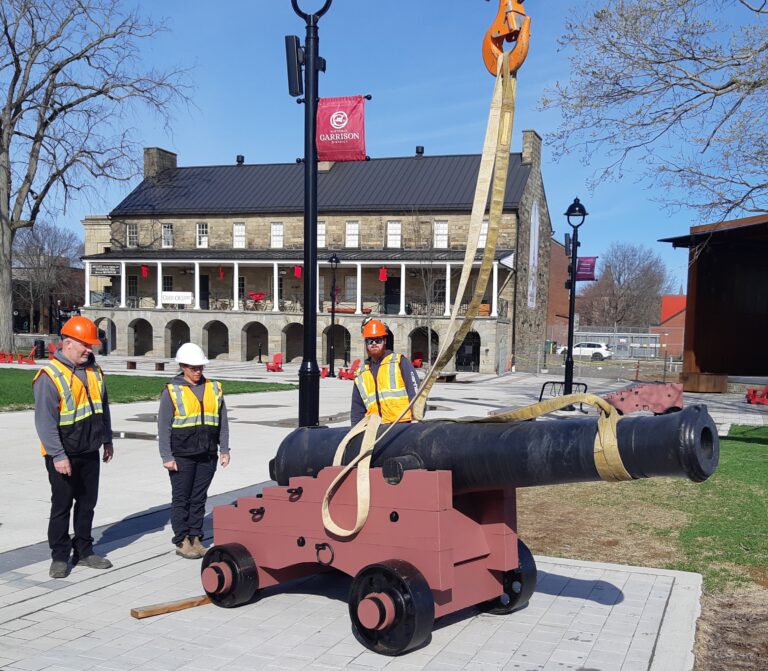Lady Beaverbrook Gym, Lady Beaverbrook Residence, and Lady Dunn Hall
Marcia Anatasia Christoforides was born in Sutton, England. She married Sir James Dunn in 1942 after working as his secretary for a number of years and became Lady Dunn. The couple was friends with Spanish artist Salvidor Dali, who created several paintings of them which are now displayed at the Beaverbrook gallery. After Dunn’s death in 1956, she was left the beneficiary of a large estate and significant charitable fund. Christoforides later married Lord Beaverbrook, William Maxwell Aitken, a close friend of Dunn, in 1963, becoming Lady Beaverbrook. She was his second wife, as Beaverbrook had been previously married to Gladys Henderson Drury Aikten, who is the namesake for the Lady Beaverbrook residence and the Lady Beaverbrook Gymnasium. 84 at the time of the marriage, Aitken died a year later, leaving Christoforides the overseer of another large estate.
Christoforides spent the remainder of her life dispersing the wealth of her two late husbands through charity, donation, and philanthropy, including the Sir James Dunn Foundation. Through this foundation, she helped establish the Sir James Dunn residence at UNB Saint John and the Sir James Dunn Wildlife Research Centre at UNB Fredericton, as well as many buildings at Dalhousie University, where she was appointed chancellor in 1968. She is now namesake for Lady Dunn Hall. During her lifetime, she contributed more than $300 million to charitable donations from the Dunn and Beaverbrook fortunes.

Aitken House and Aitken University Centre
William Maxwell Aitken was born in 1879, in Maple, Ontario. Aitken led a career in journalism—publishing his first newspaper at 13 in Newcastle, New Brunswick—as well as in business in New Brunswick, Alberta, and Quebec. Through these ventures he formed a lifelong friendship with Sir James Dunn. In 1910, Aitken moved to London, England, where he became a Conservative representative in the British House of Commons, and was knighted in 1911. He acted as a representative for the Canadian government at the front during WWI, and was named a peer in 1917, taking the name Beaverbrook after a stream near his home in Canada. After the war, Aitken bought a number of news publications, becoming the biggest newspaper baron in the UK, and continuing to publish his own work the entire time.
Aitken spent large portions of his wealth in charitable donations, and, as a result, is now namesake for several buildings at UNB and Fredericton, including the Aitken House, the Lord Beaverbrook Hotel, and the Beaverbrook Art Gallery, as well as in Saint John, Miramichi, Campbellton, Ottawa, and Calgary. The Aitken University Centre was named for his son and UNB Chancellor from 1966 to 1982, Sir Max Aitken. His legacy dubs him one of the most influential and well-known philanthropists in New Brunswick.

Richard J. Currie Center
Richard Currie is a Saint John businessman, born in 1937. In 1955, he attended UNB for chemical engineering under a Beaverbrook scholarship, before continuing his education at the Technical University of Nova Scotia and at Harvard University. In 1976, Currie became the president of Loblaw Companies, the largest food retailer and the largest private sector employer in Canada, succeeding in growing the company 350-fold to a value of $15 billion during his 25 year tenure. Currie was appointed to the Order of Canada in 1997, was chosen as Canada’s Outstanding CEO of the year in 2001, and was inducted into the Canadian Business Hall of Fame in 2003.
Currie became UNB’s chancellor in 2003. At the university, he is known for the Currie Scholarships, originally created in 1998 as the Blake-Kirkpatrick scholarships, valued at $65,000 each making them among Canada’s most valuable. Currie’s donation led to the creation of the Richard J. Currie Center, an athletics complex and gymnasium, in 2008. This building is the largest capital building project in UNB’s history, and his donation of $20 million was the largest a New Brunswick university has ever received.

Head Hall Complex
Sir Edmund Walker Head was born near Maidstone, England, in 1805 to the Reverend Sir John Head, the 7th Baronet, whose title he succeeded in 1838. He studied and tutored at Oxford, and wrote a number of articles in law, government, language and philology. Head served as the Lieutenant-Governor of New Brunswick between 1848 to 1854, Governor General of British North America from 1854 to 1861, and Governor of the Hudson’s Bay Company from 1863 to 1868. He was also a strong proponent of public education in New Brunswick pre-confederation, especially in the fields of science, medicine, and law.
As Lieutenant-Governor of New Brunswick, Head helped establish the faculty of engineering at UNB, which was at the time called King’s College, making it the first program of its kind in Canada. Because of this contribution, the complex hosting the engineering and computer science faculties is named in his honour.

Editor’s Note: This article was revised correcting the namesakes of the Aitken University Centre, the Lady Beaverbrook Gymnasium, and the Lady Beaverbrook Residence.




